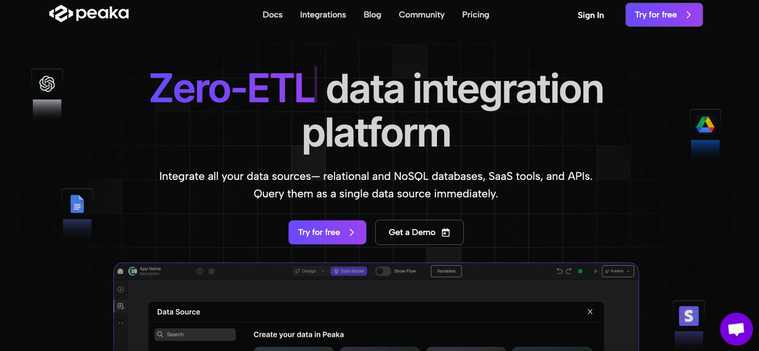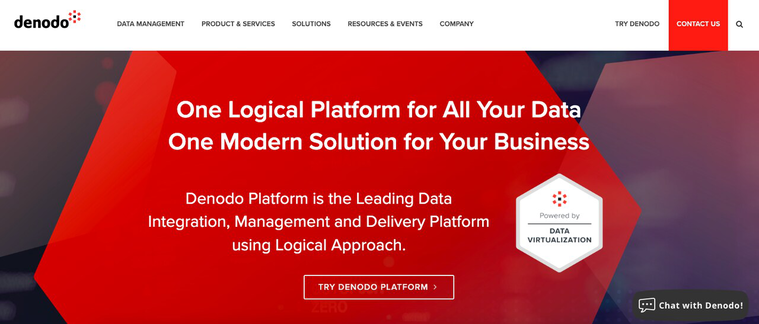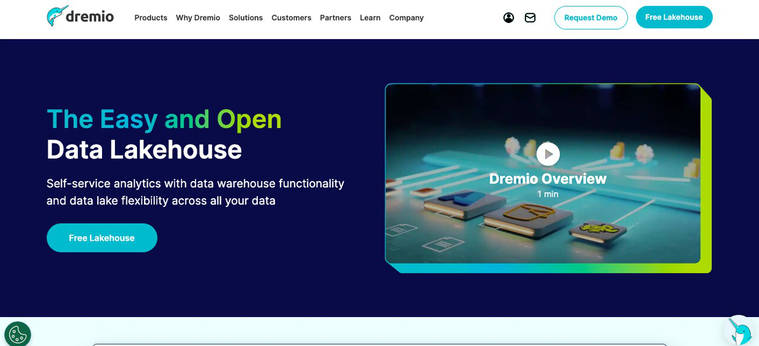Top 9 Benefits of Using a Data Integration Platform
Introduction
Businesses are continuously looking for methods to make the most of the enormous volumes of information at their disposal in today's data-driven environment.
The secret to realizing data's full potential is to integrate it seamlessly across different platforms and systems.
This procedure, called data integration, is essential for making better decisions, increasing productivity, and eventually achieving success.
You can also check out our article titled How to Create an Inbound Marketing Strategy that Works Well to learn about creating an inbound marketing strategy.
Today, we will dive into the benefits of data integration in this post, by first explaining what it is, and why it is important.
Before we plunge into the benefits, let's first clarify what data integration is.
What is data integration?
At its core, data integration is the process of combining data from different sources to provide a unified view. This could involve data in various formats such as tabular data, visuals, audio files, videos, and more.
The aim is to create a cohesive and comprehensive data set that can be analyzed to extract meaningful insights.
In simpler terms, data integration is about connecting the dots in your data landscape.
Data integration involves various techniques, including ETL (Extract, Transform, Load) processes, data virtualization, and API-based integrations.
It is not just about aggregating data but also transforming it into a consistent format that facilitates meaningful analysis.
Key takeaways
-
With the explosive growth in the amount of data that organizations have to handle, data integration is no longer a nice-to-have, but it has become a must-have for organizations striving to stay ahead of the competition.
-
Data integration enables organizations to harmonize the data being kept in diverse formats, break down data silos, and ensure data quality.
-
Data integration helps form a single view of truth and facilitates data-driven decision-making. It eliminates manual processes, minimizing the risk of human error and increasing productivity.
-
Peaka sets itself apart from other data integration platforms with its zero-ETL approach that removes the need to build and maintain ETL pipelines. Its ready-made connectors and AI-to-SQL capability lower the technical barriers for non-technical users who want to bring together and query their data.
Data in numbers
-
The global data integration market size was estimated to be $12.14 billion in 2022, and it is projected to reach $39.25 billion by 2032, growing at a compound annual growth rate (CAGR) of 12.5 percent, according to a report by Precedence Research.
-
The global data storage market, worth $212.01 billion in 2922, is projected to reach $791.52 billion by 2030, growing at a CAGR of 17.9 percent, according to a report by SNS Insider.
-
Over 80 percent of IT decision-makers think that analytics projects in their organizations keep getting delayed because data is not available in the required format.
-
While the number of data scientists in the U.S. is expected to grow 35 percent from 2022 to 2023, there will be 17,700 job openings every year throughout the decade. This figure is a sign that innovative approaches like zero-ETL and AI will play a bigger role in picking up the slack and making data available to data consumers.
Why is data integration important?

There are many reasons why data integration is important. Here are just a few:
1. To harmonize data in diverse formats
Data comes in a myriad of formats, from structured tabular data to unstructured data stored in audio and video files.
Without a seamless integration process, these diverse data formats remain disparate and fail to provide a holistic understanding of the business landscape.
A data integration tool can harmonize this data, converting it into a unified format that is easily digestible by analytical tools.
This simplifies the analysis process and, at the same time, ensures that you don't lose any valuable insight due to incompatible data formats.
2. To break down data silos
One of the primary pitfalls of not implementing data integration is the creation of data silos. These isolated pockets of information hinder collaboration and synergy across departments.
For example, marketing teams may have valuable customer insights that could significantly benefit product development, but without integration, these insights remain trapped in a silo.
By breaking down these data silos, organizations can foster a culture of collaboration, where insights from various departments contribute to a more comprehensive understanding of the business ecosystem.
3. To ensure data quality
Data integration is not merely about bringing data together; it's about ensuring that the data is accurate, complete, consistent, valid, and timely.
In the absence of proper integration, organizations run the risk of relying on flawed or outdated information, leading to misguided decisions.
Data quality is crucial for businesses relying on analytics and reporting for strategic decision-making.
Data integration tools often include mechanisms to validate and cleanse data during the integration process, ensuring that the resulting data set is reliable and accurate.
What are the benefits of data integration?
Data integration is a complex process that requires careful planning and execution. However, the benefits of data integration can be significant that they justify the extra effort. So, now let’s check the benefits of data integration!
1. Creating a single view of truth
One of the key benefits of data integration is the creation of a single view of truth.
In a typical organization, data resides in various departments and systems. Finance may have financial data, marketing may have customer data, and operations may have production data. Without integration, these views of data remain isolated.
Data integration brings together these disparate views, creating a unified and comprehensive understanding of the organization's performance.
This single view of truth becomes the foundation for strategic decision-making, as all stakeholders can align themselves around a shared understanding of the business landscape.
2. Enabling data-driven decision-making
In this data-driven era, making decisions based on accurate and comprehensive information is paramount. Data integration empowers organizations to leverage insights from diverse sources, facilitating informed decision-making.
This, in turn, enhances strategic planning and contributes to the overall success of the business.
For example, a retail organization integrating data from sales, customer support, and inventory can make data-driven decisions about product offerings, pricing strategies, and inventory management.
This holistic approach ensures that decisions are based on a complete understanding of the market dynamics.
3. Eliminating manual processes
Manual data handling is both a time-consuming and error-prone process.
Data integration automates the process of gathering data and synthesizing information, reducing the need for manual intervention.
This not only saves time and resources but also minimizes the likelihood of human errors that can have far-reaching consequences.
Consider a scenario where sales data from an e-commerce platform needs to be reconciled with inventory data from a warehouse management system.
Without data integration, this reconciliation process might involve manual data entry and validation, opening the door to errors.
Data integration tools streamline these processes, ensuring that data flows seamlessly between systems, reducing the risk of errors, and improving overall operational efficiency.
4. Boosting efficiency
Efficiency is the lifeblood of any successful organization. Data integration streamlines processes, allowing organizations to achieve more with less.
Automating repetitive tasks and providing a consolidated view of data promotes efficiency gains across various functions, from marketing to finance.
For instance, consider a healthcare organization integrating patient data from electronic health records, billing systems, and appointment scheduling platforms.
This integration provides a comprehensive view of patient information and streamlines administrative processes, reducing the time and effort required for tasks such as billing and appointment scheduling.
5. Improving customer service
In an era where personalized experiences reign supreme, customer service is a critical differentiator.
Data integration provides a 360-degree view of customer interactions by consolidating data from various touchpoints.
Such comprehensive understanding enables businesses to tailor their services to individual customer needs, fostering satisfaction and loyalty.
6. Enhancing business intelligence
Business intelligence is the sum of activities for collecting and analyzing data to provide executives, managers, and workers with actionable information. It makes data-driven decision-making possible, serving as the cornerstone of strategic planning.
Data integration empowers organizations to create comprehensive reports and dashboards, offering a holistic view of performance.
This data-driven insight facilitates forecasting, trend analysis, and strategic planning, ensuring that businesses stay ahead in a fiercely competitive landscape.
7. Streamlining compliance and risk management
For industries governed by stringent regulatory frameworks, compliance is non-negotiable.
Data integration ensures consistent and accurate reporting, mitigating the risk of compliance breaches.
Moreover, centralizing risk-related data enables organizations to proactively identify and address potential risks, safeguarding both reputation and financial stability.
8. Facilitating innovation
Innovation thrives on the ability to connect ideas and information.
Data integration breaks down information silos, fostering collaboration among cross-functional teams.
The resulting collaboration, fueled by seamless data access, accelerates the development of new products or services, propelling the organization into the vanguard of innovation.
9. Scalability and future-proofing
As businesses grow, so does the complexity and volume of data.
Data integration solutions are designed to be scalable, ensuring that organizations can expand their operations without compromising data efficiency.
This scalability future-proofs data integration investments and allows businesses to adapt to evolving needs seamlessly.
Who can benefit from data integration?

The benefits of data integration are not confined to a specific industry or business size. Organizations across sectors, whether large enterprises or small startups, can harness the power of data integration to drive success.
Let's explore how different sectors can leverage the advantages of data integration.
1. Healthcare
In the healthcare sector, patient data is dispersed across different systems, from electronic health records (EHRs) to billing and insurance platforms.
Data integration plays a crucial role in creating a unified patient profile, enabling healthcare professionals to access comprehensive information seamlessly.
This helps improve patient care and enhances administrative efficiency by automating processes such as billing and claims management.
2. Finance and banking
Financial institutions deal with vast amounts of data, including customer transactions, account information, and market data.
Data integration in the finance sector streamlines these complex data flows, providing a consolidated view for risk management, compliance, and customer relationship management.
3. Retail and e-commerce
In the retail and e-commerce sector, data integration is instrumental in optimizing the customer experience.
By integrating data from online and offline channels, organizations can create a unified customer profile, enabling personalized marketing strategies and improving inventory management.
4. Education
In the education sector, data integration supports the management of student information, academic records, and institutional operations.
Integrating data from diverse sources such as learning management systems, student information systems, and assessment tools enhances administrative efficiency and provides educators with a comprehensive view of student performance.
5. Government and public services
Government agencies and public services deal with diverse data sets, ranging from citizen records to infrastructure data.
Data integration enhances the efficiency of government operations by creating a unified view of information.
This supports initiatives such as data-driven policymaking, public safety, and resource allocation.
What are the top 4 data integration platforms?
The market for data integration platforms is a crowded one with many offerings for customers with different needs. However, four tools stand out from the rest with their novel approach to data integration:
1. Peaka

Peaka is a zero-ETL data integration platform that brings your data together and lets you query it in its source without having to deal with physical ETL processes.
The platform offers a wide array of ready-made connectors that make it a breeze to pull in data from the most popular SaaS tools.
Its embedded ChatGPT allows even non-technical users to generate SQL queries using natural language.
Peaka users proficient in SQL can use it to query NoSQL databases. After querying and filtering their unified data, they can form new data sets and expose them with APIs to serve other applications and systems.
2. Denodo

Denodo is a data management platform built on the “logical data warehouse” concept. It makes use of the data virtualization technique to simplify data access for enterprise users.
Denodo creates a virtual layer of data by bringing together data from disparate sources and breaking down data silos. It organizes the data into a universal semantic model and offers it to data consumers in different departments, making it ready for analysis and BI operations.
3. Dremio

Dremio is a data lakehouse providing its users with self-service data analytics capability. It claims to combine the performance of a data warehouse with the scalability of a data lake.
Like Denodo, Dremio, too, serves the enterprise segment and is a better fit for technical users like data engineers and IT teams. However, it appeals to tech-savvy business users, as well, with its no-code user interface and BI connectors.
4. Mozart Data

Mozart Data is a data platform that revamps conventional data integration methods with clever, modern touches. It utilizes data warehouses, ETLs, and no-code automation to centralize data and make it ready for analysis. In that sense, Mozart Data is a more traditional platform than the other three.
By automating ETL pipelines, Mozart Data allows users to focus on the analytics side of things rather than preparing and cleaning data and building and maintaining ETL pipelines.
What are the challenges of data integration?
While the benefits of data integration are compelling, it's essential to acknowledge the challenges that organizations may encounter during implementation.
Issues such as data quality, compatibility, and integration complexities can pose hurdles.
However, with careful planning, robust technologies, and strategic partnerships, these challenges can be overcome, ensuring a smooth integration process.
Final thoughts
The importance of data integration cannot be overstated.
It serves as the foundation for improved decision-making, increased efficiency, and reduced costs.
Businesses that embrace data integration gain a competitive edge, unlocking a myriad of benefits that extend across all facets of operations.
As technology continues to advance, the role of data integration will only become more crucial.
To fully harness the potential of data integration, organizations must invest in robust solutions, foster a data-centric culture, and stay abreast of emerging trends.
Embrace the power of data integration and unlock the true value of your organization's most valuable asset.




 Please
fill out this field
Please
fill out this field













